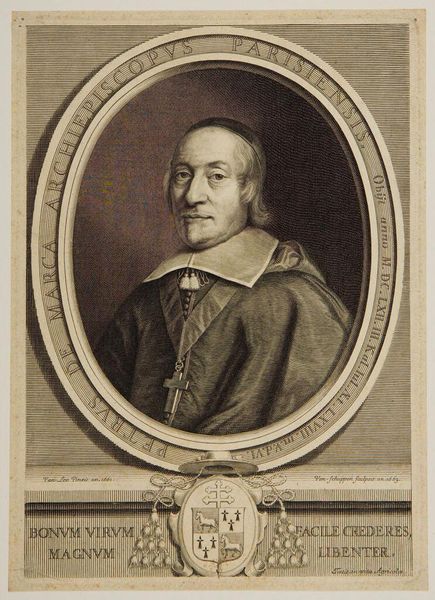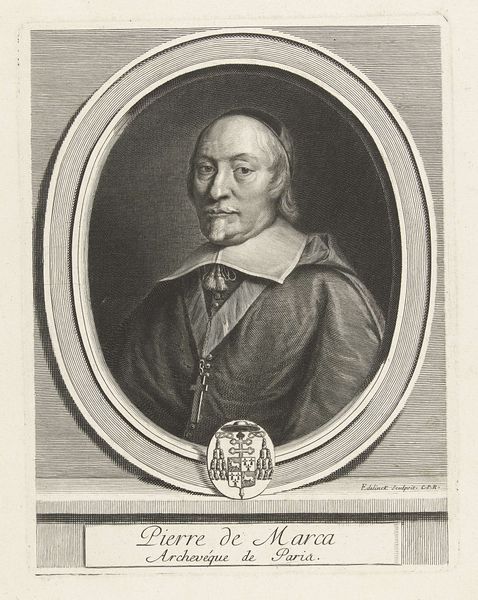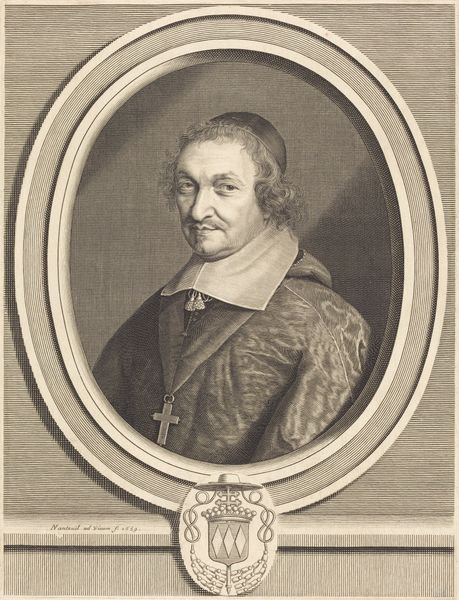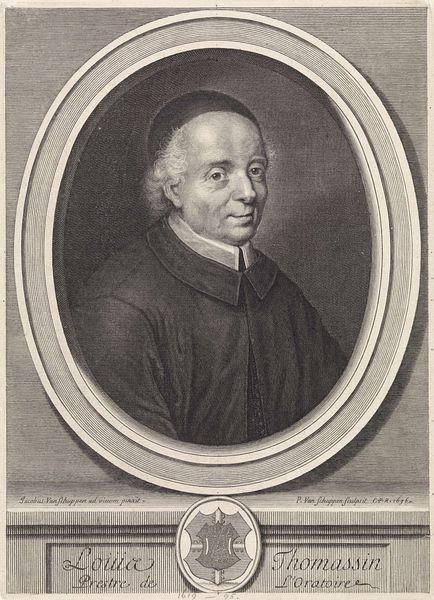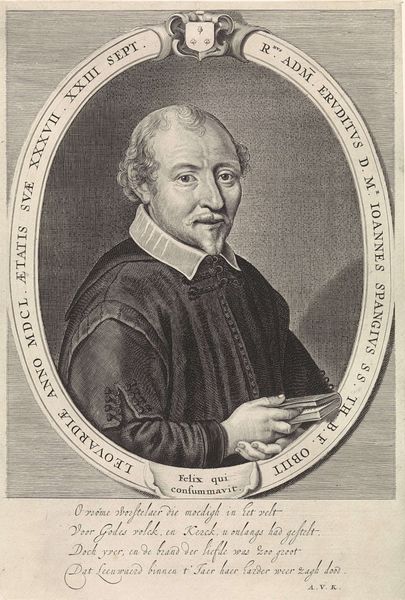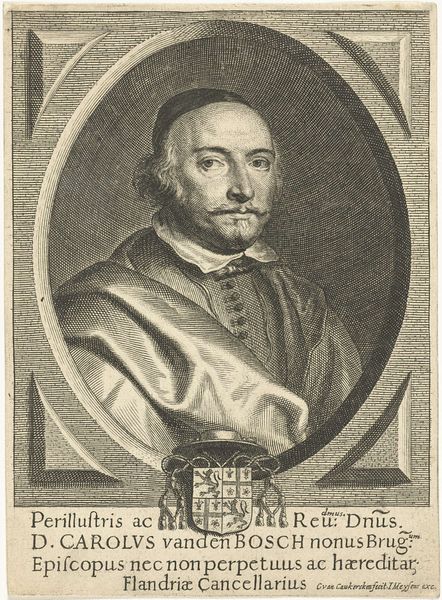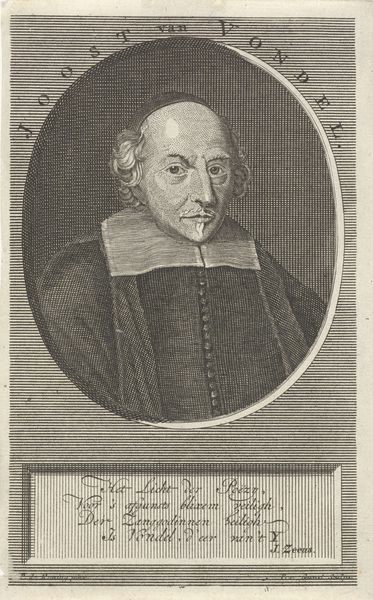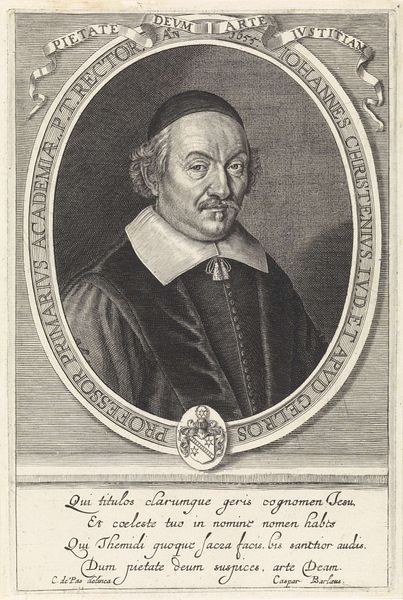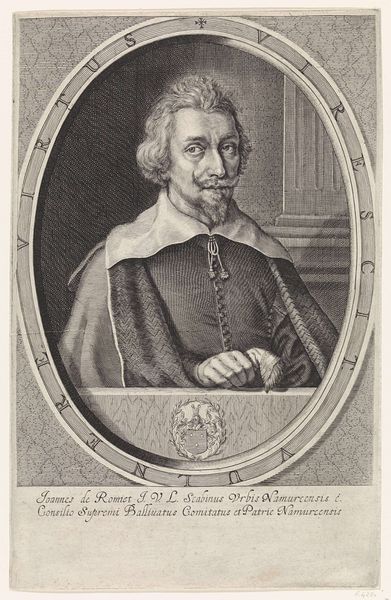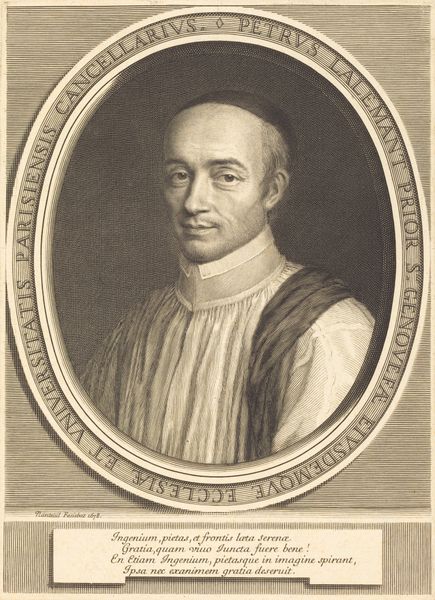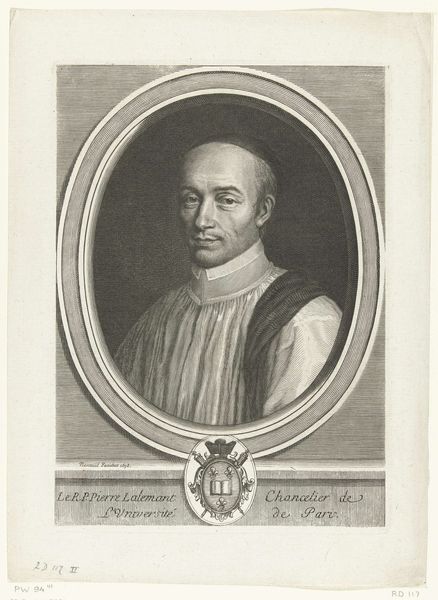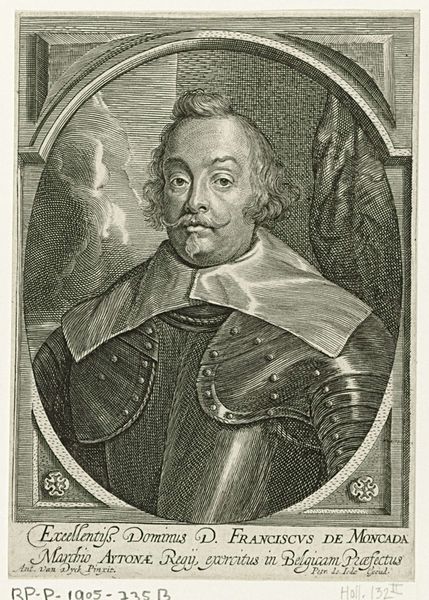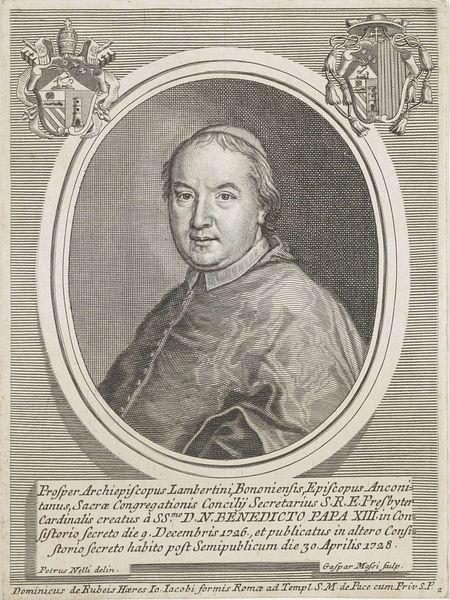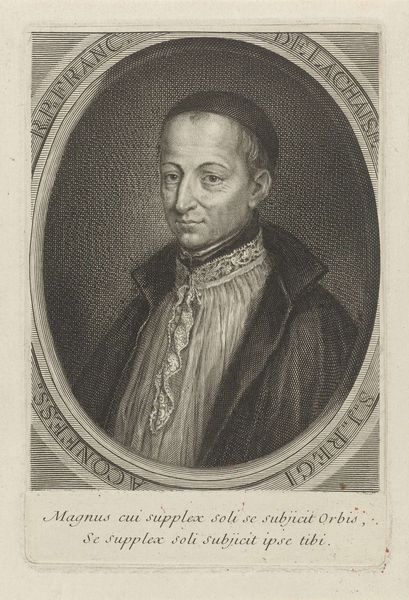
engraving
#
portrait
#
baroque
#
history-painting
#
academic-art
#
engraving
Dimensions: height 290 mm, width 206 mm
Copyright: Rijks Museum: Open Domain
Editor: We’re looking at "Portret van bisschop Pierre de Marca" by Pieter van Schuppen, made between 1663 and 1665. It's an engraving currently housed at the Rijksmuseum. The texture achieved with the engraved lines is so impressive; the image seems almost three-dimensional. What immediately jumps out to you when you examine this work? Curator: The compelling aspect resides in the interplay between the intricate details of the figure and the surrounding ornamentation. Observe the use of the oval frame—its inscription acting as a visual perimeter that contains and focuses the gaze upon the subject. This creates a tension between containment and expansiveness, a crucial element of Baroque portraiture. Editor: That’s interesting. I hadn’t considered the frame itself as part of the meaning. It really does draw the eye to the bishop. What do you make of the text elements and the coat of arms at the bottom? Curator: They serve a dual function. Semiotically, the inscriptions – “BONVM VIRVM MAGNUM” and “FACILE CREDERES, LIBENTER” – construct an image of the sitter, embedding qualities of virtue and generosity. Structurally, they counterbalance the weight of the portrait above, maintaining visual equilibrium within the composition. Do you see how van Schuppen creates depth despite using just line? Editor: Absolutely. The varying thickness and density of the engraved lines gives shape to his robes and face. It’s incredible how the technique defines the forms. I also see now that without the inscription, the composition might feel unbalanced. Curator: Precisely. The artistry of the work, thus, rests in its masterful manipulation of visual elements – line, form, inscription – creating a self-contained system of representation that both depicts and interprets its subject. It operates as an independent formal and conceptual construct. Editor: Thank you for illuminating that! Thinking about it this way really transforms how I view this type of work. Curator: Indeed. Hopefully you recognize that close observation of compositional elements can change how we perceive art.
Comments
No comments
Be the first to comment and join the conversation on the ultimate creative platform.
